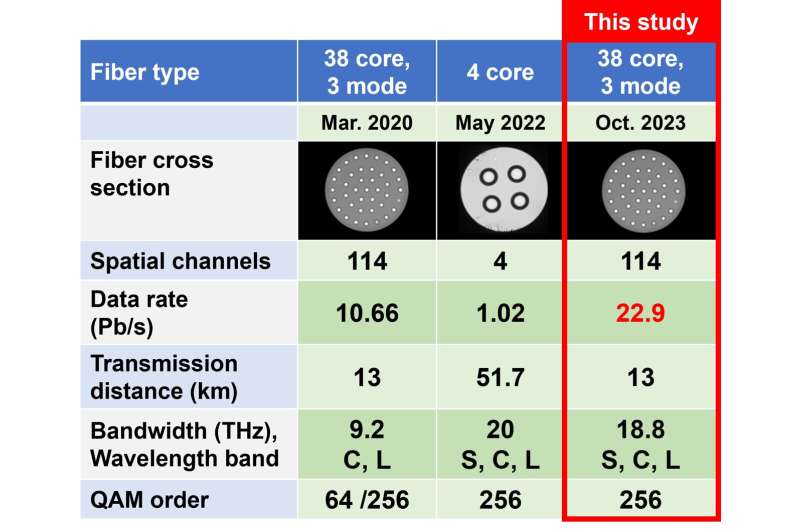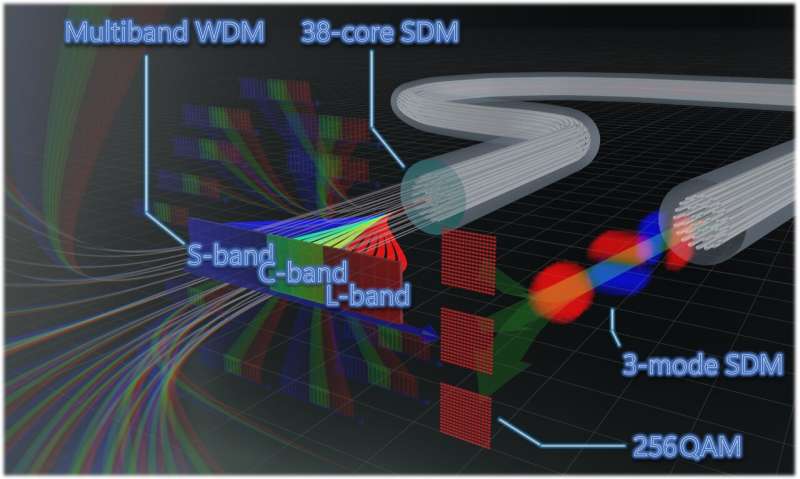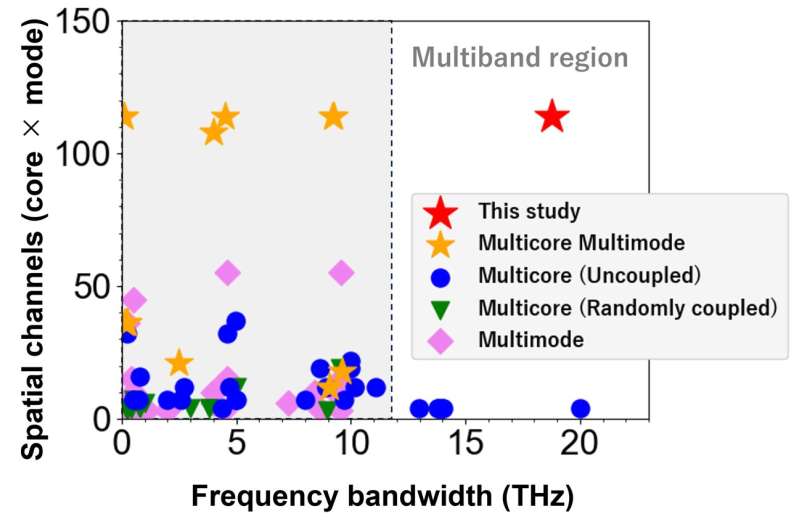World record optical fiber transmission capacity doubles to 22.9 petabits per second

Researchers from the National Institute of Information and Communications Technology (NICT), in collaboration with the Eindhoven University of Technology and University of L’Aquila, demonstrated a record-breaking data rate of 22.9 petabits per second using only a single optical fiber, which was more than double the previous world record of 10.66 petabits per second.
In this research, researchers combined the latest research technologies, such as large-scale Space Division Multiplexing (SDM) and multi-band Wavelength Division Multiplexing (WDM), to demonstrate a path to future ultra-large capacity optical communication networks.
The results of this experiment were accepted as a post-deadline paper presentation at the 49th European Conference on Optical Communications (ECOC 2023) and presented by Ben Puttnam on Thursday, October 5, 2023.
To cope with the ever-increasing data traffic demands, multiplexing technologies using space and wavelength for high data-rate optical fiber communications have been investigated. The former uses advanced optical fibers containing multiple optical paths (channels) within a common cladding, whereas the latter enhances the total transmission capacity by increasing the transmission bandwidth to accommodate many independent Wavelength Division Multiplexed (WDM) data channels.
To date, NICT has realized Space Division Multiplexing (SDM) with over 100 spatial channels by combining multicore fiber (MCF) and multimode fiber transmission technologies as well as multi-band WDM with a total bandwidth of 20 THz by using the S-, C-, and L-bands.

However, except for very short-distance cases (1 km), the combined use of multi-band WDM and SDM has only been demonstrated for uncoupled four-core MCFs. To combine multi-band WDM and SDM with large spatial channel count fibers (e.g., 114 channels with a 38-core 3-mode fiber), a multi-band-compatible MIMO receiver is required.
NICT demonstrated the possibility of fiber-optic data communication at 22.9 petabits per second, which is more than double the previous record of 10.66 petabits per second. Using a multi-band-compatible MIMO receiver, they successfully combined multi-band WDM and multi-core, multi-mode SDM for the first time.
The measured transmission capacity for each core ranged from ~0.3 to 0.7 petabits per second, leading to a total transmission capacity of 22.9 petabits per second. The achieved data rate includes overhead for an implemented forward-error correction code, with the demonstration showing up to 24.7 Pb/s can be achieved with better-optimized coding. This is over 1,000 times the data rate of currently deployed optical fiber communication systems.

While uncoupled four-core MCF is suitable for early adaptation, further improvement of the telecommunication infrastructure using ultra-large-capacity optical fibers will be needed in the future, where the data traffic demand is expected to increase by 3 orders of magnitude (x1,000 times). This study demonstrates the first successful combination of multi-band WDM and SDM employing a multicore multimode fiber, which is key to the realization of future ultra-large-capacity optical fiber communication networks.
NICT will continue to explore multi-band WDM over large SDM fibers including randomly coupled MCFs or multimode fibers that require massive multi-band MIMO receivers.
Provided by
National Institute of Information and Communications Technology (NICT)
Citation:
World record optical fiber transmission capacity doubles to 22.9 petabits per second (2023, November 30)
retrieved 30 November 2023
from https://techxplore.com/news/2023-11-world-optical-fiber-transmission-capacity.html
This document is subject to copyright. Apart from any fair dealing for the purpose of private study or research, no
part may be reproduced without the written permission. The content is provided for information purposes only.
For all the latest Technology News Click Here
For the latest news and updates, follow us on Google News.

